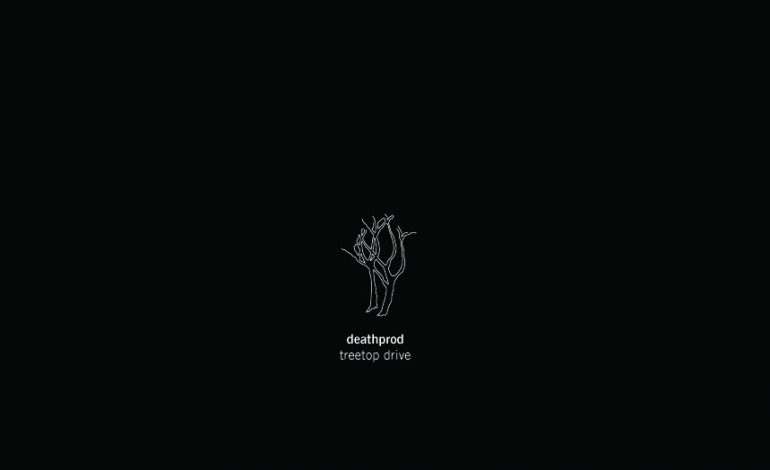

The Interior of an Explosion
The self-made man has long been an ideal that humanity has clung close to in times of desperation. The downtrodden grip onto the notion that their own hands can catapult them to success or at least somewhere better then their current station. While the factual nature of this ideal is a matter of endless debate between factions split along political lines, it seems that music is one of the last spaces where this principle is largely and truly applicable in the modern era. One of the prime examples of this aspiration is Helge Sten, better known as Deathprod, his completely homemade repertoire of instruments (including such oddities as the theremin and ring modulators) powering some of the most visceral and intimate music ever to be released. On his 2017 reissue of Treetop Drive, Morals and Dogma and Imaginary Songs From Tristan Da Cunha, Sten uses his homegrown studio to create a haunting, noisy and upsettingly cautious soundtrack for the inside of an explosion.
Imaginary Songs From Tristan Da Cunha is the most immediately interesting and approachable record from this triplicate. The first four songs combine for a sub-ten-minute runtime and then are absolutely dwarfed by the incomprehensible “The Contraceptive Briefcase II,” which is a monstrous thirty-minute track that runs through numerous peaks and valleys much like an offering from Mogwai or even Explosions in the Sky. However, these slopes are more subtle and infinitely longer than anything those two bands have to offer. The song is largely ethereal, often existing only at the fringes of the human ear; it whirs and buzzes, but is mostly a background piece — save for the few moments it rises into a delightfully wretched cacophony, strings whir and frenzy as the tape looper grows static and forces itself nearer to the clipping point. It is one of the most careful exercises in song crafting that one should ever have the joy to witness, and, despite its mammoth runtime, it never grows dull for even a moment.
Morals and Dogma stands out as rather different from the previous record, most of its tracks exceed the ten-minute mark, but none come close to “The Contraceptive Briefcase II” in terms of length and scale. The opener “Tron” begins with light atmospheric whirring that soon gives way to a clattering static comprised of numerous unidentifiable components. This apocalypse drum grows louder and louder as the droning whir picks up in intensity and urgency but remains strangely angelic; like the eye of a massive hurricane, something horrible lurks on the horizon, yet this moment is safe, if only for a minute. If the first track is keeping watch for the eye wall, then the final track, appropriately named “Cloudchamber,” is the wall besetting upon the listener. The drone in this threatens to put even SunnO))) out of business, so deep and fierce is its intensity. The sun seems to extinguish itself as the track comes on, and no hope is to be found within its walls. It is unyielding in its goal, discomfort and agony are mandatory and expertly exploited, creating one of the most engaging drone tracks in recent history.
While the previous two records have been sparse and apocalyptic, Treetop Drive embodies rebirth. The production on the album is full and lush despite following the same construction cues of the previous albums. “Treetop Drive 1” is populated with lush strings that frequently break off into a maddening pitch, but are largely confined to a single loop that changes only in pitch, warble and volume until about halfway through the song when an electronic element comes in and forces the piece into an overwhelming blitzkrieg of sound that eventually swallows the track whole. The second track, “Treetop Drive 2,” is a child of this chaos — it is almost unlistenable in its fury. The synth drone loop threatens to destroy even the very ear of the listener it intends to influence. The track is mercifully shorter and, while enjoyable, it was certainly wise to have it be shorter than “Treetop Drive 1.” The final portion of the Treetop Drive trilogy, aptly named “Treetop Drive 3,” is the most carefully constructed song on the record, blending components of drone, string and harsh noise into a delightful broth of masterful songwriting. The track is perfectly circular, ending calmly and quietly and bestowing a much-needed bit of sunshine into the thick, tar-like darkness that has been the focus of this violent triplicate.
Deathprod is a creator of masterpieces. To say anything less would be an insult and this much needed repackaging of his rather unrecognized contributions to the Audio Virus and drone worlds could not have come at a more opportune time. The world is crying out for someone to extend a hand to the masses below and accurately reflect their current state. These accomplishments in the strange, mysterious and achingly beautiful world of noise should absolutely be recognized and deserve to be lauded as hallmark works in not only their respective scenes but in the greater world of music.
